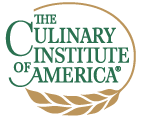Any other product style that is permitted provided the product meets all the relevant requirements of the standards.
Finely crushed flesh of olives.
Product style of whole or stoned olives, usually small in size, with capers and with or without stuffing, where the olives are the most numerous compared with the entire product marketed in this style.
Product style where whole olives are broken or broken and stoned , with or without capers, plus stuffing material, where the olives are the most numerous compared with the entire product marketed in this style.
Product style where stoned olives are stuffed either with one or more suitable products (pimiento, onion, almond, celery, anchovy, olive, orange or lemon peel, hazelnut, capers, etc.) or with natural pastes prepared from such products.
Style of stoned olives containing small pieces of such olives of no definite shape and practically devoid (no more than 5 per cent of such units by weight) of identifiable stem- insertion units as well as of slice fragments.
Style of stoned olives which have been deliberately or accidentally broken while being stoned or stuffed. They normally contain pieces of the stuffing material.
Style of stoned or stuffed olives which are sliced into segments of fairly uniform thickness.

